Answering Your Immunization Questions
Over the past year, the importance, availability and effects of vaccination have been at the forefront of global conversation. As your trusted health care…
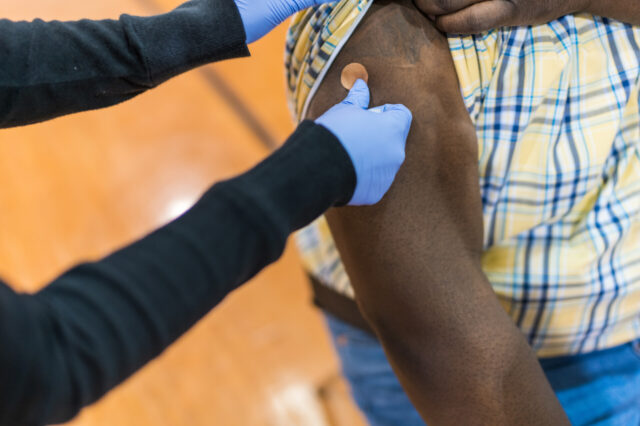
Update your location to show providers, locations, and services closest to you.
Safe sex means taking steps before and during sex that can prevent you from getting an infection, or from giving an infection to your partner.
Chlamydia - safe sex; STD - safe sex; STI - safe sex; Sexually transmitted - safe sex; GC - safe sex; Gonorrhea - safe sex; Herpes - safe sex; HIV - safe sex; Condoms - safe sex
A sexually transmitted infection (STI) is an infection that can be spread to another person through sexual contact. STIs include:
STIs are also called sexually transmitted diseases (STDs).
These infections are spread by direct contact with a sore on the genitals or mouth, body fluids, or sometimes the skin around the genital area.
Before having sex:
Your sexual partner should be someone who you know does not have any STI. Before having sex with a new partner, each of you should get screened for STIs and share the test results with each other.
If you know you have an STI such as HIV or herpes, let any sexual partner know this before you have sex. Allow him or her to decide what to do. If you both agree to have sexual contact, use latex or polyurethane condoms.
Use condoms for all vaginal, anal, and oral intercourse.
Other tips include:
Get tested regularly for STIs if you have new sexual partners. Most STIs have no symptoms, so you need to be tested often if there is any chance you have been exposed. You will have the best outcome and will be less likely to spread the infection if you are diagnosed early.
Consider getting the HPV vaccine to keep from getting the human papillomavirus. This virus can put you at risk for genital warts and for cervical cancer in women.
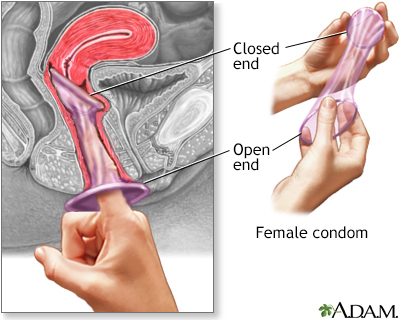
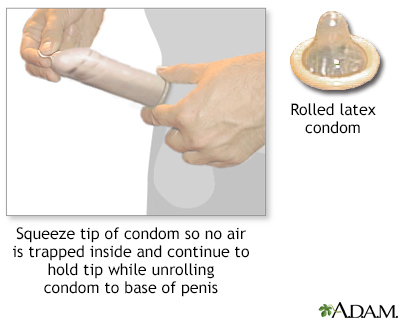
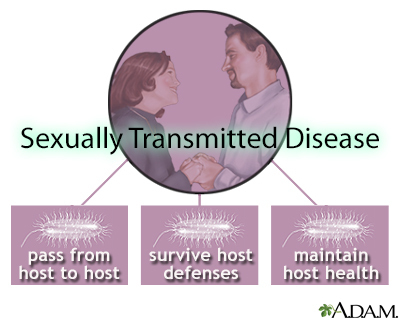
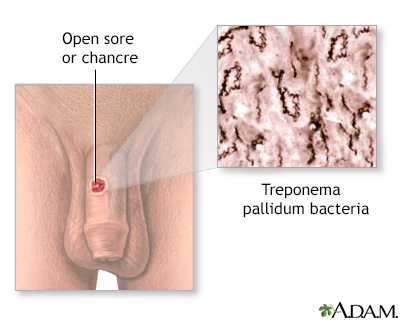
Del Rio C, Cohen MS. Prevention of human immunodeficiency virus infection. In: Goldman L, Schafer AI, eds. Goldman-Cecil Medicine. 26th ed. Philadelphia, PA: Elsevier; 2020:chap 363.
Eckert LO, Lentz GM. Genital tract infections: vulva, vagina, cervix, toxic shock syndrome, endometritis, and salpingitis. In: Gershenson DM, Lentz GM, Valea FA, Lobo RA, eds. Comprehensive Gynecology. 8th ed. Philadelphia, PA: Elsevier; 2022:chap 23.
Swygard H, Cohen MS. Approach to the patient with a sexually transmitted infection. In: Goldman L, Schafer AI, eds. Goldman-Cecil Medicine. 26th ed. Philadelphia, PA: Elsevier; 2020:chap 269.
US Preventive Services Task Force; Krist AH, Davidson KW, et al. Behavioral counseling interventions to prevent sexually transmitted infections: US Preventive Services Task Force Recommendation Statement. JAMA. 2020;324(7):674-681. PMID: 32809008 pubmed.ncbi.nlm.nih.gov/32809008/.
Workowski KA, Bachmann LH, Chan PA, et al. Sexually transmitted infections treatment guidelines, 2021. MMWR Recomm Rep. 2021;70(4):1-187. PMID: 34292926 pubmed.ncbi.nlm.nih.gov/34292926/.
Our community and patient programs provide great value to patients, families and loved ones. People can find support, educational materials, expert consultants and more. In most instances, these programs are offered free of charge.
Over the past year, the importance, availability and effects of vaccination have been at the forefront of global conversation. As your trusted health care…

Millennials have surpassed Baby Boomers as the largest generation in United States history. With this considerable amount of young adults influencing the…
